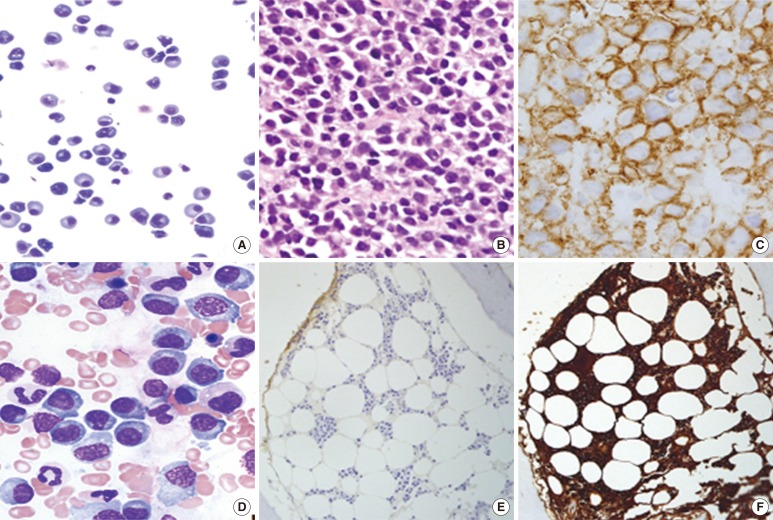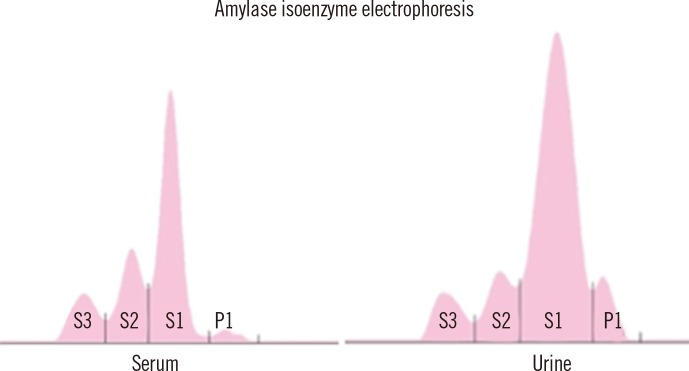Ann Lab Med.
2014 Nov;34(6):463-465. 10.3343/alm.2014.34.6.463.
A Case of Salivary-Type Amylase-Producing Multiple Myeloma Presenting as Mediastinal Plasmacytoma and Myelomatous Pleural Effusion
- Affiliations
-
- 1Department of Laboratory Medicine, Biomedical Research Institute, Pusan National University Hospital, Busan, Korea.
- 2Department of Laboratory Medicine, Pusan National University Yangsan Hospital, Yangsan, Korea. iskim0710@gmail.com
- 3Department of Laboratory Medicine, Jinhae Yonsei Hospital, Changwon, Korea.
- 4Department of Hematology-Oncology, Busan Cancer Center, Pusan National University Hospital, Busan, Korea.
- KMID: 2129572
- DOI: http://doi.org/10.3343/alm.2014.34.6.463
Abstract
- No abstract available.
MeSH Terms
Figure
Reference
-
1. Masood A, Hudhud KH, Hegazi A, Syed G. Mediastinal plasmacytoma with multiple myeloma presenting as a diagnostic dilemma. Cases J. 2008; 1:116. PMID: 18717993.
Article2. Varettoni M, Corso A, Pica G, Mangiacavalli S, Pascutto C, Lazzarino M. Incidence, presenting features and outcome of extramedullary disease in multiple myeloma: a longitudinal study on 1003 consecutive patients. Ann Oncol. 2010; 21:325–330. PMID: 19633044.
Article3. Delannoy A, Hamels J, Mecucci C, Fally P, Wallef G, de Fooz C, et al. Amylase-producing IgD-type multiple myeloma. J Intern Med. 1992; 232:457–460. PMID: 1280672.
Article4. Ohtsuki T, Yawata Y, Wada H, Sugihara T, Mori M, Namba M. Two human myeloma cell lines, amylase-producing KMS-12-PE and amylase-non-producing KMS-12-BM, were established from a patient, having the same chromosome marker, t(11;14)(q13;q32). Br J Haematol. 1989; 73:199–204. PMID: 2479409.
Article5. Lai JL, Zandecki M, Mary JY, Bernardi F, Izydorczyk V, Flactif M, et al. Improved cytogenetics in multiple myeloma: a study of 151 patients including 117 patients at diagnosis. Blood. 1995; 85:2490–2497. PMID: 7537117.
Article
- Full Text Links
- Actions
-
Cited
- CITED
-
- Close
- Share
- Similar articles
-
- Myelomatous effusion with poor response to chemotherapy
- A Case of Mediastinal Extramedullary Plasmacytoma Associated with Multiple Myeloma
- Cytologic Diagnosis of Malignant Pleural Effusion in Multiple Myeloma: Two Case Reports
- Myelomatous Pleural Effusion with Elevated ADA Activity
- A Patient with IgA Monoclonal Gammopathy Presenting as Myelomatous Pleural Effusion with Axillary Node Involvement



